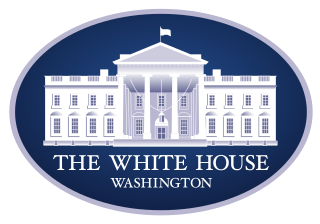Trade Cases

Leibowitz on the WTO—Help Wanted as the World Changes Course
Written by Lewis Leibowitz
May 5, 2020
Trade attorney and Steel Market Update contributor Lewis Leibowitz offers the following update on events in Washington:
It’s hard to blame Roberto Azevedo for quitting. The Director General (Chief Executive) of the World Trade Organization is leaving in September, one year before his term runs out.
The WTO is in turmoil because of U.S. hostility to the dispute settlement system, failure of negotiations for 19 years running, the coronavirus pandemic, countries restricting exports as well as imports, etc. Who can fault him for deserting a ship that appears to listing heavily, if not sinking.
The United States has announced that it does not want to leave the WTO, nor abolish it. While Robert Lighthizer, the U.S. Trade Representative, finds considerable fault with the WTO, he understands that the United States and the world are better off with it than without it. But the issues continue to pile up.
The failure of the WTO to bring its institutions up to date has aggravated a lot of disputes that started out small but all of a sudden have become existential. With a New York Times op-ed last week, Ambassador Lighthizer has undercut one of the chief pillars on which the WTO stands—the desirability of international interdependence.
For decades after World War II, the global trading system fostered interdependence based on the theory, formed during the war, that a collapse in global trading led to an increase in global tensions and increased the probability of war. After the war, a consensus formed around increasing trade as a matter of world peace. A country’s self-sufficiency in military matters was a bad thing, not a good thing. The Soviet Union was offered the chance to join the party in the 1940s, but declined. China was brought into the WTO based on the same theory—that bringing China into the world trading system would give them a stake in preserving the world as a market that was more valuable alive than destroyed.
After 20 years, that theory has been cast aside. Clearly, China has fallen short of living up to its end of the bargain, and the pandemic has made countries aware of the advantages for keeping at least some production at home. Most countries do not have that option, however; they will always be dependent on foreign sources for critical products—including the United States.
Also after 20 years, the world’s manufacturers have supply chains that have grown to depend on China and other developing and developed economies. In his op-ed, Ambassador Lighthizer alluded to the current tensions with Mexico over whether factories in that country were “essential” because they made critical parts for products finally assembled in the United States. Companies are rethinking their supply chains—and they should.
While they are rethinking, they are thinking anew about why they globalized their supply chains years ago. Important reasons for doing so remain: lower wages; improving productivity in developing countries; incentives to invest abroad; efficient transport options; and, yes, easier environmental regulations. Those factors have not gone away, but new ones have appeared that tend to make foreign sourcing riskier, including the possibility of a pandemic changing fundamentally the markets for their products and services. That’s no longer theoretical.
Ambassador Lighthizer made the point very clearly—if business craves certainty in these things, he recommends bringing the production and jobs back to the United States. It has a ring to it—but how much certainty is there in the United States? Reshoring may be patriotic, but is it profitable? And doesn’t profitability still matter?
If the United States decides to try to lure companies back to these shores, inevitably the government, federal, state and local, must employ carrots, not just sticks (like tariffs). Which companies and industries will it pick to award these prizes? What will they choose as the most important factors for dispensing largess? We don’t yet know the answers to these questions. After November, we may have a new team to wrestle with these issues. They are likely to emphasize factors that the current team would not. That does not sound like certainty for U.S. investors.
If politics enters into the calculations (and how likely is it that politics will not enter into them), will things like geography within the United States matter? A few random examples—not the only ones, but recent ones, come to mind.
First, the administration announced it will look at hiking tariffs for electric transformer subassemblies—cores and laminations that use electrical steel as a basic input. The only producer of electrical steel in the U.S. has indicated it will stop production if tariffs are not imposed on these subassemblies. Where are the jobs? Ohio.
Second, Alcoa recently shut down one of their few remaining aluminum smelters, in Washington State. The Aluminum Association and the members of Congress from Washington State blamed excessive product exclusions under the Section 232 tariffs on aluminum, which the association claims vastly exceed the demonstrated need for aluminum imports. Where are the jobs? Washington State.
Third, steel exclusions for semifinished steel imports, such as slabs, have uniformly been rejected by the Commerce Department; yet requesters point out that domestic steel producers do not market slab to downstream companies. Quite a few are in the western U.S., where there is no production of semifinished steel. Where are the jobs? Again, Washington and California (among others).
If exclusions are doled out even a little bit for political reasons, how much certainty can companies expect if they return production to the United States? If companies return their factories to the U.S., will they have access to the U.S. market on the same terms as they now have from foreign locations? Will the U.S. start imposing tariffs on downstream products to incentivize companies to come back? What will that do to the domestic market for consumer products, many of which are accessible to middle class Americans because their components are cheaply and efficiently made overseas?
These are complicated problems. They will not be solved overnight. But a massive return from foreign outsourcing requires that they be considered carefully; and there should be some general agreement on strategies between the two major political parties, so that businesses are not forced to make expensive decisions that will take decades to amortize when an election looms every four years.
Roberto Azevedo’s successor will have a full plate.
The Law Office of Lewis E. Leibowitz
1400 16th Street, N.W.
Suite 350
Washington, D.C. 20036
Phone: (202) 776-1142
Fax: (202) 861-2924
Cell: (202) 250-1551

Lewis Leibowitz
Read more from Lewis LeibowitzLatest in Trade Cases

Price: Reciprocal tariff changes and potential new tariffs for Brazil, Canada, others
Trade issues do not seem poised to leave the headlines anytime soon. And as recent developments show, the administration’s tariff policy remains ever-changing.

Bessent on Vietnam: 20% tariff stands, Section 232 protections apply
US Treasury Secretary Scott Bessent told reporters that tariffs for Vietnamese imports to the US are 20% and "specific industries" have trade protections under the Section 232 tariffs.

Steel groups welcome passage of budget bill
Steel trade groups praised the passage of the Big Beautiful Bill (BBB) in Congress on Thursday.

Canada moves to curb steel imports with TRQs
Canada has implemented tariff-rate quotas (TRQs) on steel imports to help stabilize its domestic market.

Commerce launches probe into unfairly traded rebar imports
Here are the details and a case timeline for the rebar trade case recently initiated by the Commerce Department.
